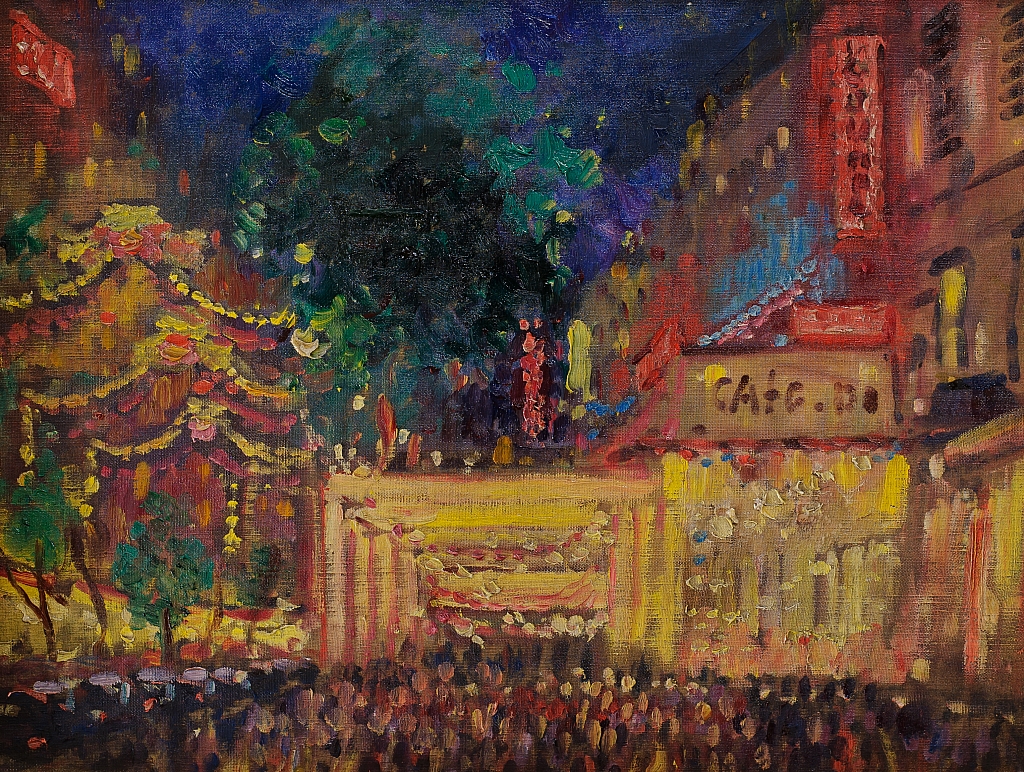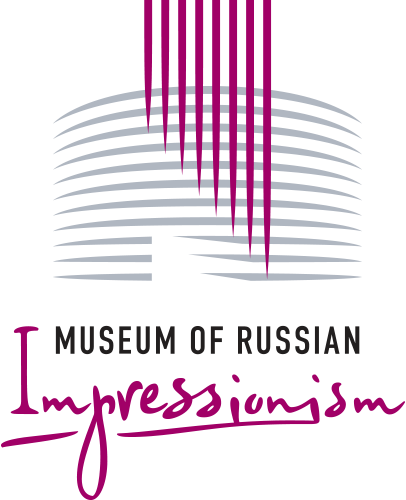
Montmartre at night. 1934
Alexander Gerasimov
Oil on canvas
46X61.5
Paris, the city of lights! Vibrant colours, lively crowds, narrow streets and packed cafes… Alexander Gerasimov had heard so much about it from his mentor, the celebrated artist Konstantin Korovin, and it felt incredible to be there, in Montmartre, the very heart of the city’s famous artists’ quarter. As a leading Soviet artist, in 1934 Gerasimov received a state award, in the form of a trip abroad. After a short stopover in Berlin, he headed to the French capital to look at works by the Old Masters and see for himself what life in Europe was really like. Gerasimov spent two months in museums and artists’ studios, but the allure of the Paris boulevards proved irresistible. Before he set out to paint outdoors for the first time, he anxiously anticipated the reaction of passers-by to an artist working right there, in the thick crowds. It turned out that it would take much more than an artist painting outdoors to make the Montmartre public raise their eyebrows. Occasionally, Gerasimov even heard encouraging remarks as he drew his quick watercolour sketches, which he would later recreate in his studio as oil paintings. The artist painted eighty scenes of Paris life during the two months, and “Montmartre at Night” is one of the most moving and expressive among them. Interestingly enough, Korovin too had used almost exactly the same vantage point to paint Montmartre. On the one hand, Gerasimov, as an upstanding Soviet artist, could not approve of the Parisians’ careless and materialistic life. Just look at all those bars and cabarets, brightly lit storefronts, elegant women adorned with ostrich plumes, drinking their champagne… Nevertheless, the artist was so drawn to all these unrestrained pleasures! To feel himself young again, an art student in love with Impressionism, its broad brushstrokes and expansive manner... Looking at this painting, it is hard to believe that this is the same artist who would go on to paint iconic portraits of Soviet leaders. It is no wonder that during Soviet times this work was never included in any of Gerasimov’s exhibitions.



